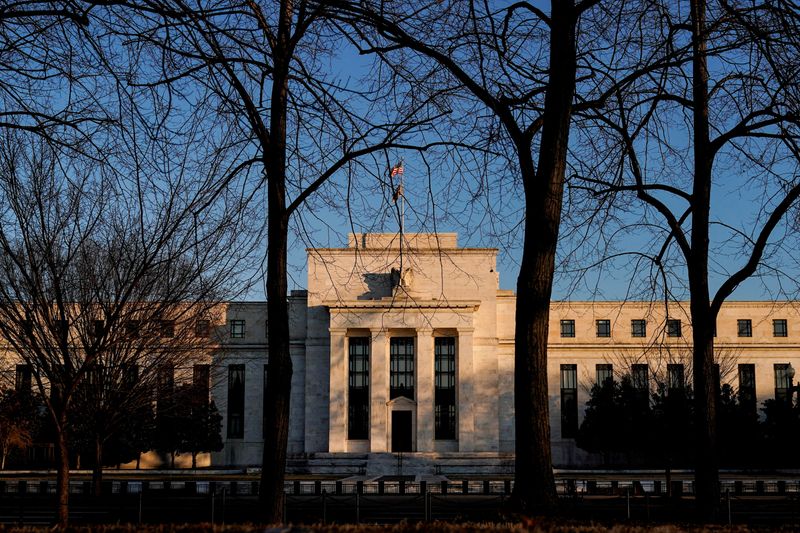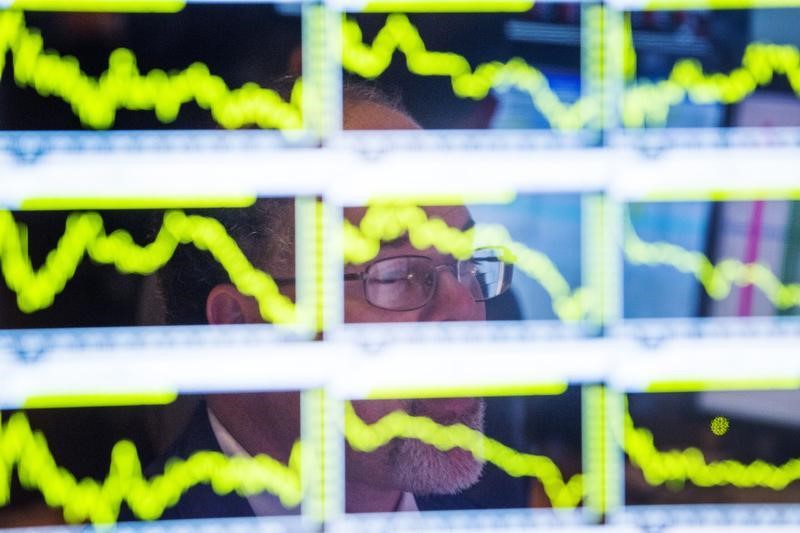By Howard Schneider
WASHINGTON (Reuters) -Federal Reserve officials appeared divided at their meeting earlier this month over how much farther they may need to cut interest rates, but as a group agreed this was a moment to avoid giving much concrete guidance about how U.S. monetary policy is likely to evolve in the weeks ahead.
“Participants noted that monetary policy decisions were not on a pre-set course and were conditional on the evolution of the economy and the implications for the economic outlook … They stressed that it would be important for the (Federal Open Market) Committee to make this clear as it adjusted its policy stance,” according to the minutes of the Nov. 6-7 meeting, which were released on Tuesday.
The Fed cut its benchmark policy rate by a quarter of a percentage point to the 4.50%-4.75% range at the meeting three weeks ago, a session that followed Republican candidate Donald Trump’s victory in the Nov. 5 U.S. presidential election.
Participants noted the complications of making policy right now, with “many” saying that the volatility of recent economic data made it important to try to discern underlying trends, and many also observing that uncertainty about the neutral rate of interest – the level at which economic activity is neither stimulated nor restrained – made it hard to determine how much current interest rates were actually suppressing economic activity.
That left some participants noting “that the Committee could pause its easing of the policy rate and hold it at a restrictive level” if inflation remained too high, and some saying that rate cuts could be accelerated “if the labor market turned down or economic activity faltered.”
“Many” officials argued that doubts about the true stance of monetary policy “made it appropriate to reduce policy restraint gradually.”
After the release of the minutes, financial markets added slightly to bets on a rate cut in December, and kept intact prior bets on a slower pace of reductions next year, with just one cut priced in by the middle of the year.
STRONG ECONOMY
Fed officials at the meeting appeared to steer clear of any discussion about the economic implications of Trump’s coming return to office, according to the minutes
The session also followed a run of stronger-than-expected economic data – “remarkable” is how Fed Chair Jerome Powell referred to it – that stoked concern monetary policy may not be restricting the economy as much as thought.
Officials since the meeting have said ongoing economic strength meant the Fed’s benchmark policy rate might already be close to the “neutral” level, an argument for fewer rate cuts approved at a slower pace in order to avoid easing policy too much and possibly rekindling inflation.

Others argue the economy was likely to slow and the job market continue to weaken, which would be a reason to continue easing financial conditions to encourage spending and investment.
While investors still expect the Fed to deliver another quarter-percentage-point cut at its Dec. 17-18 meeting, the odds have slipped from greater than 80% in mid-October to about 60% currently.



